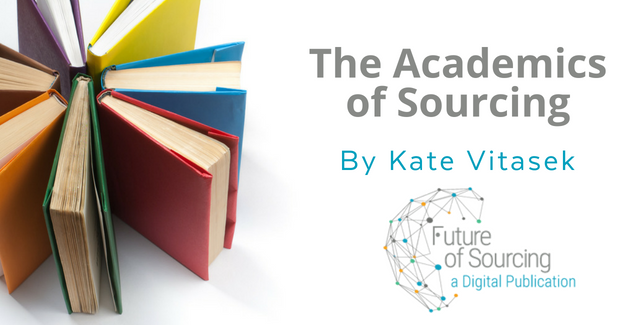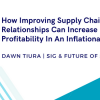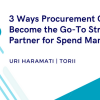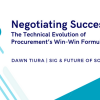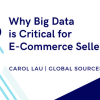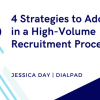One of the most famous figures in the global outsourcing arena, Kate Vitasek is also – not coincidentally – one of Outsource’s most popular contributors, having graced our pages with both her regular column (examining lessons to be learnt by the sourcing and outsourcing community from renowned academics and thought leaders from elsewhere in business) and standalone articles for over five years. With the Vested model continuing to shake up the space, and with her latest book wowing readers the world over, we thought it was about time to put Kate in the Q&A hot seat, to share her thoughts on the changes she’s seen since she first stepped out into the outsourcing limelight; to explain why frequently problems arise simply because the buyer’s getting what was bought; and why it’s absolutely critical not to outsource one’s outsourcing…
Outsource: Kate, it’s a delight to have you with us today. We’re sure our readers know you well enough that we can for once skip the customary request for background info, so let’s get straight into the juicy stuff: what do you see as being the big things that are going to happen over the next few quarters in outsourcing? What are the big trends and events that will dominate the space?
Kate Vitasek: When I look at the usual conferences every year, looking back to, say, 2010 it was all about “what country am I going to?” “Where is the cheapest country for transactional services?” Everyone was comparing the cost of a call centre rep or developer in India versus Malaysia. Today, people are realising chasing the lowest labour rates is not sustainable. Today, I am seeing a clear shift towards business outcomes and sustainability of supplier relationships.
The problem is that people don’t understand what outcomes are. And they definitely are struggling with how to contract for outcomes. Far too many companies are saying they want a strategic supplier that will invest in outcomes and then turning around and writing performance-based/managed services deals that buy SLAs for the supplier’s outputs. The execution is misaligned to the intent.
The facilities management and supply chain sectors are leading in the shift to outcome-based approaches. When outsourcing these services you can’t do labour arbitrage to low-cost countries because the people performing the work have to be in a certain location. In my opinion, the ITO/BPO outsourcing space is definitely behind the facilities management sector in terms of shifting to outcome-based thinking. There are a lot of big deals that are coming up for renewal where organisations in the IT space are having to do something different, and I’m hopeful that some of these big deals are going to truly make the shift to outcome-based deals.
One trend that I am not a fan of in the IT space is the shift to multisourcing. Organisations are frustrated that big outsourcing deals did not go as well as they wanted and they are consciously choosing to split up the deal into smaller deals with competing suppliers. Many people think cloud-based and SaaS utility deals are the right thing. But I think it is a mistake in many cases. While a company can commoditise their IT, they trade off innovation. Down the road when they have four vendors that are performing work that one used to do I think they’re going to see that they’re not getting value – while they are getting a lower price and they are significantly increasing their governance costs to manage multiple suppliers. In addition, they are complaining they are not getting innovation. But who can blame a supplier for not investing in their customer when they’re viewed as a commodity? It’s a Catch-22.
I think three to five years from now you will see a boomerang effect from many of the companies that have shifted to multisourcing. Why? Because if you can’t get a handle on one supplier, how do you get a handle on four? My hope is that these organisations will learn – just like people have done with facilities and supply chain – that maybe, just maybe, they are approaching these outsourcing relationships wrong; it’s that they as buyers need to approach the suppliers more strategically. If they say they want strategic suppliers, if they say they want innovation, they have to approach those relationships and contracts very differently.
O: How do you think organisations can best combine, if at all, on the one hand trying to get everything on a commodity basis, with on the other hand outcomes-based approaches. Is it a bridge that can be crossed and if so, how is that going to be doable?
KV: That’s exactly the point. You need to pick a path. You either want a commodity or you want a strategic outcome-based supplier who will drive innovation; you can’t have both. And that’s the point of our latest book, Strategic Sourcing and the New Economy: Harnessing the Potential of Sourcing Business Models for Modern Procurement [co-written with Bonnie Keith, Karl Manrodt and Jeanne Kling]. You either have a commodity transaction-based deal, you have an output-based deal (performance-based/managed services); or you have a strategic deal where the buyer and supplier have a win-win outsourcing agreement where they are working in a highly collaborative manner to achieve true business outcomes.
People who want outcomes – but commoditise their suppliers – are just going to be frustrated. They need to realise that sourcing is an underlying business model and they need to pick which model they’re going to use. It’s either transactional or output-based (performance-based/managed services) or outcome-based. You have to choose which model is most appropriate for your situation.
O: What do organisations need to change to make the shift to an outcome-based model?
KV: It’s simple. Suppliers need to quit selling and begin to drive outcome-based solutions. And on the flip side, buyers need quit buying and begin to buy strategic outcomes. The more the buyer buys a commodity, and the more the seller has to sell a commodity. It’s no surprise companies wind up with a commodity service than limits innovation and value creation. It’s not that this is bad: some deals should be commodity transactions – but not all of them. The key is that buyers need to understand when it’s best to buy a commodity, and when it’s best not to buy a commodity. A utility deal is great for a multivendor environment when you are truly buying a commodity, where you have universal suppliers and limited switching costs. But not everything an organisation needs is a commodity – and here lies the rub. People are using the wrong sourcing business model for the wrong deal.
O: Certainly with cloud, ever since cloud has been a buzzword, one of the most heavily touted advantages is that you can set up this utility-type model and just plug it in and go. But it’s always been something of a head-scratcher for Outsource that so many cloud vendors have been pushing that angle in particular because clearly these are often strategic-level engagements and you just can’t get that kind of relationship in place. A lot of the buyers’ expectations seem to be a bit out of kilter with reality when it comes to what they were trying to get for what they wanted to pay.
KV: I agree. I don’t think buyers and suppliers have reconciled this disconnect in their heads. The number one thing I tell buyers is “Sorry, you got what you paid for. You bought a transaction – so don’t be sad you didn’t get an outcome and innovation.”
I’m not saying that utility-based deals for cloud services aren’t valuable; in many cases it is the right choice. But in far too many cases it’s not the right choice. Bottom line: pick a swimlane and structure your deal appropriately; don’t say you want a strategic outcome-based deal, and turn around and just buy a commodity.
I am excited that the Sourcing Industry Group has endorsed the book and is adopting the concepts of sourcing business models into SIG University. I am hopeful as more and more organisations are exposed to learning about sourcing business models they will begin to pick the most appropriate model for what they are trying to achieve.
O: So what does this mean then for the SIAM layer? Are people moving to keep that whole function in-house?
KV: Good question. I personally don’t think you should outsource your outsourcing. You don’t have to be great at providing the service, but you should be great at managing the strategy and governance. As P&G would say in their case study, governance is a core competency.
I personally believe that putting in a service provider in a SIAM layer equates to outsourcing your outsourcing. You don’t have to be smarter than the supplier at what the supplier is doing, but you have to understand your strategy and how you’re working with those suppliers and governing those suppliers. Maybe I am going to be wrong, but I think outsourcing your outsourcing will backfire in the long term.
Rather, I think organisations should invest in becoming amazing at creating and managing their outsource relationships. If you don’t get your underlying sourcing model business right, it will cause friction. My advice is to start with your understanding which sourcing business model is the most appropriate and then architect the right deal for the right model – which includes nailing governance.
To continue reading this article, click here.


